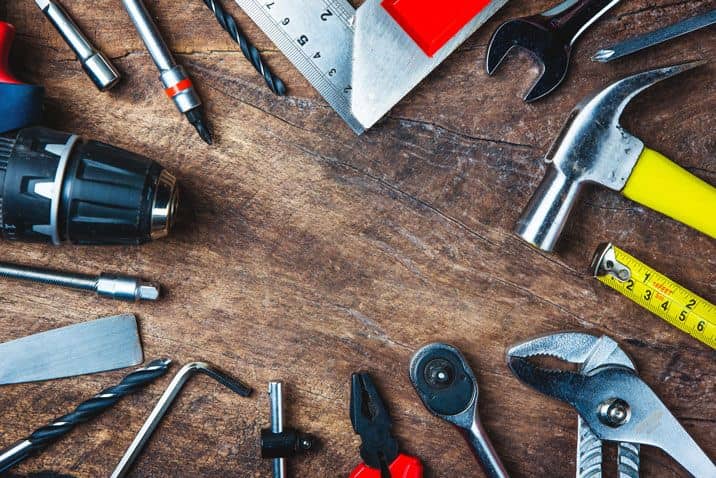Selling a House in Poor Condition: Sell a House in Bad Shape Fast!
Selling a house in poor condition is a bit more challenging than selling a home that’s market ready. While selling your place through a real estate agent is likely to require considerably more effort, there are other options.
For example, selling for cash to a real estate investor allows you to skip the expensive and time-consuming effort associated with getting your property in shape for a realtor. Better understanding the ins and outs of selling a home that is in disrepair helps to ensure that you’ll make the right choices for you moving forward.
Table of Contents
Thinking of buying or selling a house in bad condition?
if you are thinking about selling – or even buying – a house that isn’t in great condition, there is a lot to consider. For example, will you be better off selling your home as is, putting some time and money into minor work, or going for the gusto and going with big fixes? Determining the best course of action for you will depend on the circumstances involved and the priorities guiding you.
12 tips for selling a house in poor condition
Whether you want to know how to sell a dilapidated property or just something that isn’t quite as bad, selling a house in poor condition generally requires a different approach than simply listing your home and working with a real estate agent.
1. Sell it as is
if you want to sell a home in poor condition, selling the property just the way it stands to cash home buyers in California may be your best option. This approach eliminates the need to fix anything, to have a home inspection, to put your home on the market, and to work with a realtor – not to mention the fact that you won’t need to prepare and stage your home for viewings and open houses.
When you balance the effort and expense of transforming your home from its current condition to a property that is attractive to buyers, selling for cash to a real estate investor can make good financial sense.
At SoCal Home Buyers, we pay cash for homes that are classified as being in truly poor condition to simply needing some minor work, and the process couldn’t be easier. If your home is need of some work – or a lot of work – and you want to sell quickly, give us a call.
We’ll set up a time that’s convenient for you and will send over our in-house inspector – who is prepared to make you a cash offer on the spot. If you accept, the sale can be completed and the cashier’s check or electronic transfer of funds can be in your account nearly instantaneously.
2. Consider an iBuyer
If you need to sell quickly, you may want to consider selling to an iBuyer. These are online companies that buy properties virtually. There is no financing required on their part, so the associated headaches are eliminated.
The process involves you filling out a detailed form, which leads to the iBuyer making you an offer based on comparable homes in your location. It’s important to know, however, that iBuyers charge fees that can rival the commissions charged by real estate agents.
3. Consider a house flipper
If you’re trying to sell a home that needs significant work, your selling options include house flippers – who not only buy homes quickly but also pay cash for them. The main point to consider in relation to house flippers is that they are solely motivated by the profits derived from buying low, putting in the necessary effort, and selling high – often making tens of thousands of dollars in the process. In other words, you can expect a lower selling price from a house flipper.
4. Sell your house yourself
Another option is selling your house yourself, which is referred to as FSBO – or for sale by owner. While this is certainly possible, it’s the most challenging approach. When you sell a home yourself you forego the fees and commissions that realtors charge, but you’re likely to get lower price for your home, which can exceed any savings you may experience.
Additionally, selling a home is complicated matter that is highly regulated, and those who dabble in the process often make costly and time-consuming mistakes. Generally, selling a house on one’s own requires considerable effort and isn’t the best approach if time is a concern.
5. Work with a real estate agent with experience selling homes in poor condition
Some real estate agents have experience selling homes that are in disrepair, and if you don’t need to sell quickly, this approach can be a good option. There are, however, considerations that you’ll need to keep in mind, including:
- You’ll need to deal with any financing hiccups related to the buyer’s mortgage.
- The sale will be affected by the market conditions.
- You may need to make home improvements.
- There will be closing costs, fees, and commissions involved.
- You’ll need to prepare your house for showings.
- It will likely take you longer to find a buyer.
6. Know your home’s actual value
Just because your home is dilapidated does not mean that it has no value. In fact, the property value of the land alone may be considerable. Further, there is a big difference between a home that’s inhabitable and one that is merely in need of repairs when it comes to its value.
If your home is not safe to live in, selling the place as is to a real estate investor is likely your best option. The kinds of conditions that tend to make a house uninhabitable include the following:
- Serious electrical concerns
- Black mold
- lead or asbestos
- Termite infestation and damage
- Serious issues with the foundation
- Serious plumbing concerns
- Serious roof damage
If your home has not reached this level of disrepair but still requires a significant amount of work before selling, your options may increase. You can sell a home in poor condition without taking on much needed work, but it will almost certainly be harder to sell by traditional methods, such as with a realtor.
If, on the other hand, the condition of your home requires only cosmetic fixes, these things are worth taking care of if you are looking to sell with a real estate agent. If you’re interested in selling your property quickly, however, a cash buyer may be your best bet.
The bottom line when it comes to selling a home that isn’t in prime condition is that, unless the place is uninhabitable or in need of major work, the line between poor and fair condition can be very fine.
A buyer who is looking for a home in like-new condition won’t be interested anyway, and the distinction may not matter to a buyer who recognizes that they’ll need to put some effort into making the property their dream home.
7. Improve your home’s curb appeal
Even if you’re selling your property in poor condition, you may be able to get a higher price for it by making the place more attractive to potential buyers with some minor cosmetic fixes. This can include all the following that apply:
- Painting the front door
- Sprucing up the yard
- Clearing the property – inside and out – of debris or anything that makes it less appealing
- Giving the place a good cleaning
- Washing the windows
Regardless of whether you sell through a realtor or sell your home yourself, giving a ramshackle property a bit of a facelift can pay off if you have the time and resources to sell in the local real estate market.
8. Dig a bit deeper by making minor updates
If you’re willing to dig a bit deeper in terms of preparing your house for sale, it can support a higher asking price. The kind of work that falls into this category include the following:
- Painting your home’s interior in a cozy and modern neutral palette
- Replacing old, outdated faucets with gleaming modern fixtures
- Replacing the light bulbs throughout your home with warm lighting that not only brightens the space but is also inviting
- Having the air conditioning and heating system serviced, which can make a considerable difference in terms of the home inspection
9. Consider the return on your investment
Before you dive into getting your home in better condition to sell, it’s important to calculate whether the outlay of expense and effort will pay off in the long run. If you don’t need to sell your house quickly, the following kinds of updates tend to reap returns that exceed the investment amount:
- A new roof
- New hardwood flooring or refinished hardwood flooring
- Fixing or replacing HVAC
- New garage doors
10. Know the law
California real estate law dictates that sellers must come clean about risk factors related to their homes, and the requirements include:
- You must share your location’s risk of natural hazards, including wildfires, earthquakes, landslides, and flooding. You, as the homeowner, and your listing agent must both sign the natural hazard statement.
- As the seller, you’re required to fill out a Transfer Disclosure Statement (TDS) that outlines any defects or material facts that could pose a risk to the health or safety of the buyers – or that could negatively affect the value of the property.
- You must also disclose any deaths that happened on the property – regardless of what the cause was – within the last three years. Further, if asked about deaths on the property in the more distant past, you’re required to answer truthfully.
11. Know how to sell
In order to maximize your profits, you need to know how to sell a house that needs major repairs. This involves establishing a realistic price that takes your home’s unique selling points into careful consideration but also accounts for any work and maintenance it requires. Points to consider include:
- Know how to market your home to its maximum potential.
- Determine your target audience, whether that means selling through a real estate agent, selling the house yourself, selling to a real estate investor, or any other option.
- Be realistic about how long the sales process will likely take – based on the method you’ve chosen.
- Know your priorities and allow them to guide you. For example, if moving your property as quickly as possible is your goal, selling to a real estate investor who pays cash for houses is an excellent choice.
12. Know what not to fix
While putting some time and effort into spiffing up a fixer-upper prior to sale can lead to financial gains, it’s also important to know what not to fix when selling a house in California.
For example, putting a lot of money into redecorating a property that’s seen better days can backfire. Unless you’re going to totally transform the place, redecorating is unlikely to pay for itself – and it can limit the number of interested buyers.
10 tips for buying a house in poor condition
If you looking for houses in bad condition for sale and want to maximize your purchasing power, the following tips can help you get the job done.
1. Understand how the seller arrived at the asking price
When a homeowner sells a house as is, the asking price is generally calculated by evaluating comps – or comparable sales – that take the following variables into consideration:
- The kind of neighborhood
- The age of the home
- The number of bathrooms
- The number of bedrooms
- The home’s square footage
- The amenities included
From here, the seller will subtract the cost of any necessary work to arrive at an asking price.
2. Recognize your bargaining power
An owner who sells a house without carrying out any work very likely has a good reason for doing so. Perhaps, they inherited the property and don’t have the time or the resources to maintain it , or perhaps, they’ve already moved on to a new location, and the property is worse for wear and tear as a result.
Whatever the reason, however, the owner is motivated to sell, which bolsters your bargaining power. Committing to making the sale proceed as smoothly and quickly as possible can lead to a further reduction in price.
3. Consider your best financing options
FHA offers a loan program that allows buyers to borrow additional funds for rehabilitating the homes they purchase, which can help sweeten the deal. Before buying a home that needs work, it’s important to explore your financing options – in relation to the unique circumstances involved.
4. Pay special attention to location
If the property is in the right location, it can outpace any defects that detract from the home. Some locations are always hot, which can make selling even rundown houses a breeze. There are other locations, however, that may speak to you personally.
For example, if the school district is ideal for your children, the location would shave hours off your commute, or the home is centrally located in relation to everything you have going on, it can more than make up for some of the work that needs to be done.
5. If the home isn’t moving, know that it may be a good time to strike
The longer a home sits on the market, the more likely the sellers are to decrease the asking price. If the house isn’t in good shape to begin with, it may increase your leverage in terms of lowering the asking price. A home that has slipped into disrepair becomes less and less marketable as time passes, which makes focusing on homes that aren’t moving a good plan.
6. Remember that everything is relative
One buyer’s dream home is another’s nightmare. If you’re in the market for a mid-century modern home that you can transform by making necessary upgrades, for example, the stunning but rundown example you’re considering may be just what you’re after.
If you’re a buyer who is looking for a turnkey home, however, you will likely have no interest in a ramshackle place – no matter how good its bones are. Knowing what you’re looking for and keeping the pros and cons of any given property in balance is the best path forward when it comes to purchasing a home that is not in great condition.
7. Don’t assume that the sale price has been adjusted
While most sellers adjust their asking price on homes in poor condition in relation to the work that is needed, you can’t – and shouldn’t – count on it. If you think the asking price doesn’t accurately reflect the fair market value minus the cost of necessary work, it’s time to do some negotiating.
8. Hold the owner accountable
There are important laws in place that are designed to protect home buyers like you, including requirements in relation to revealing known health and safety risk factors.
Ask the seller direct questions about any concerns you may have regarding wildfires, flooding, earthquakes, and beyond – rather than relying on them to share the information up front.
Further, if you have concerns about any deaths on the property beyond the three-year reporting requirement, ask the owner directly.
9. Recognize how damaging hoarding can be
If the house you’re considering purchasing is owned by a hoarder or had a hoarder living in it, it’s important to proceed with utmost caution. Not only is it much more difficult to see what condition the house is in due to the buildup of stuff blocking your path but it’s also far more difficult to evaluate the associated damage. Underneath all that stuff is the perfect breeding ground for serious problems, and proceeding with caution is advised.
10. Don’t lose sight of the work involved
Buying a home that is in poor condition can require a considerable amount of work along with significant resources and time. Carefully consider your decision to buy before taking on more than you can handle.
Key takeaways on how to buy or sell a house in bad shape
Selling a house in poor condition can be done, but there are several primary points you should keep in mind. The speediest approach and the one that is likely to be the most financially rewarding is selling to a real estate investor.
At SoCal Home Buyers, we’ll set up a home inspection with our own inspector – who will make a cash offer then and there. This allows you to bypass the hassles that come with fixing up the property, marketing your house, and preparing for and scheduling showings – not to mention the pricey fees and commissions involved. Here’s how it works:
- Give us a call at 951-331-3844—or fill out the short form below—to request your fair cash offer.
- Await our prompt response to discuss your property in greater detail and schedule a one-time inspection that allows us to offer the highest amount possible.
- At the time of the inspection, our in-house inspector will quote you a fair cash offer, and if you’re on board, you can consider your home sold!
- Choose your closing date, and leave the rest to us. You can choose payment via check or wire transfer. It simply doesn’t get any easier.
Some of the key takeaways for selling a house that’s in rough shape include:
- It’s important to know your home’s value and to be realistic about your asking price.
- If you’re going to sell through a traditional method, making minor updates can pay off.
- If you sell to a cash buyer, you can expect a quicker sale.
- Certain work generally isn’t worth carrying out in terms of return on investment.
- You are required by law to share risk factors related to your home with potential buyers.
if you’re considering buying a house that is in bad shape, keep the following in mind:
- Be sure you’re up for the challenge.
- Put in the effort necessary to determine the home’s value.
- Put your bargaining power to good use, and don’t be afraid to negotiate a better price.
If you’re selling a home as is, a real estate investor can do the heavy lifting for you, but if you’re buying a home that’s in disrepair, you’ll need to do the legwork yourself










